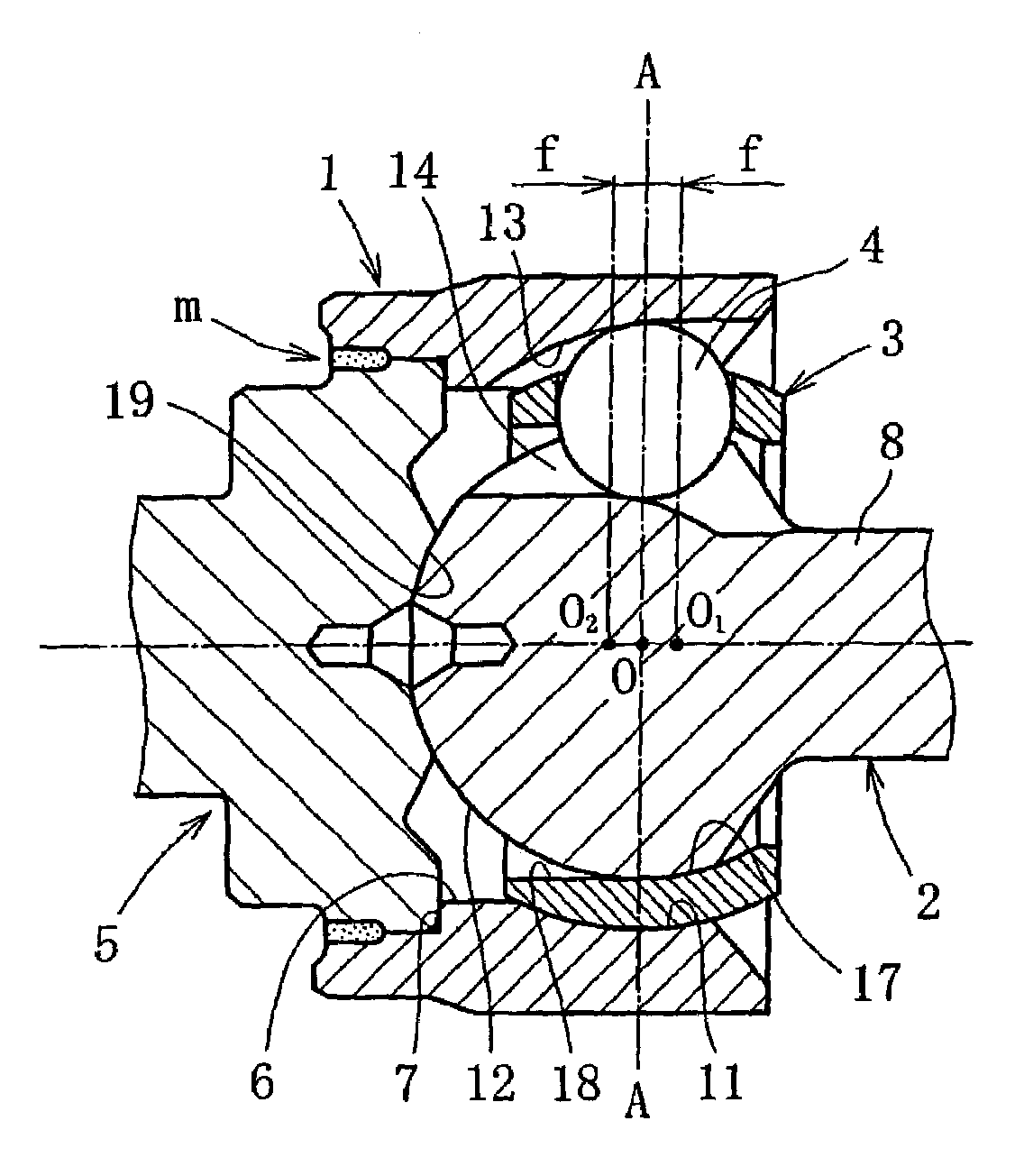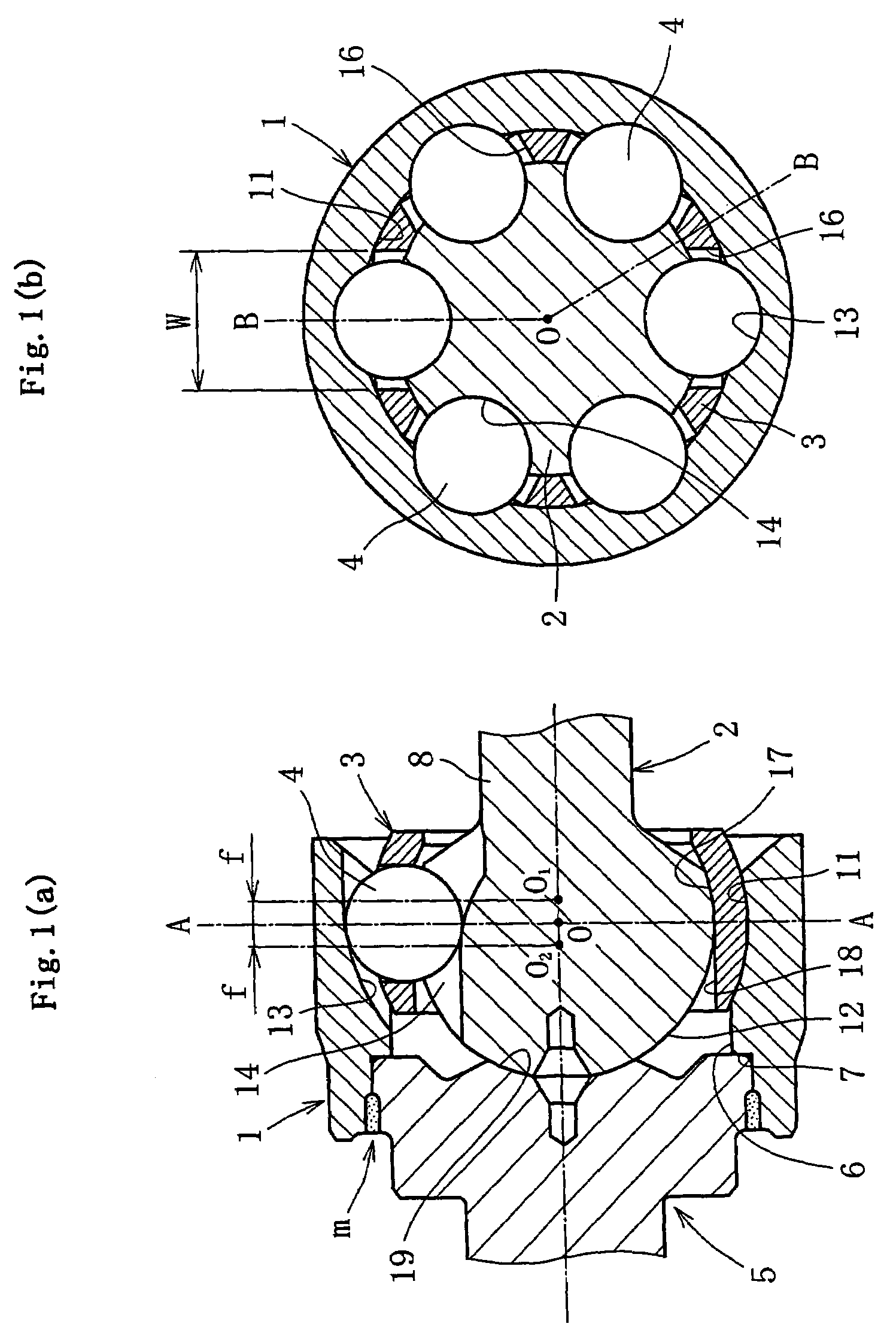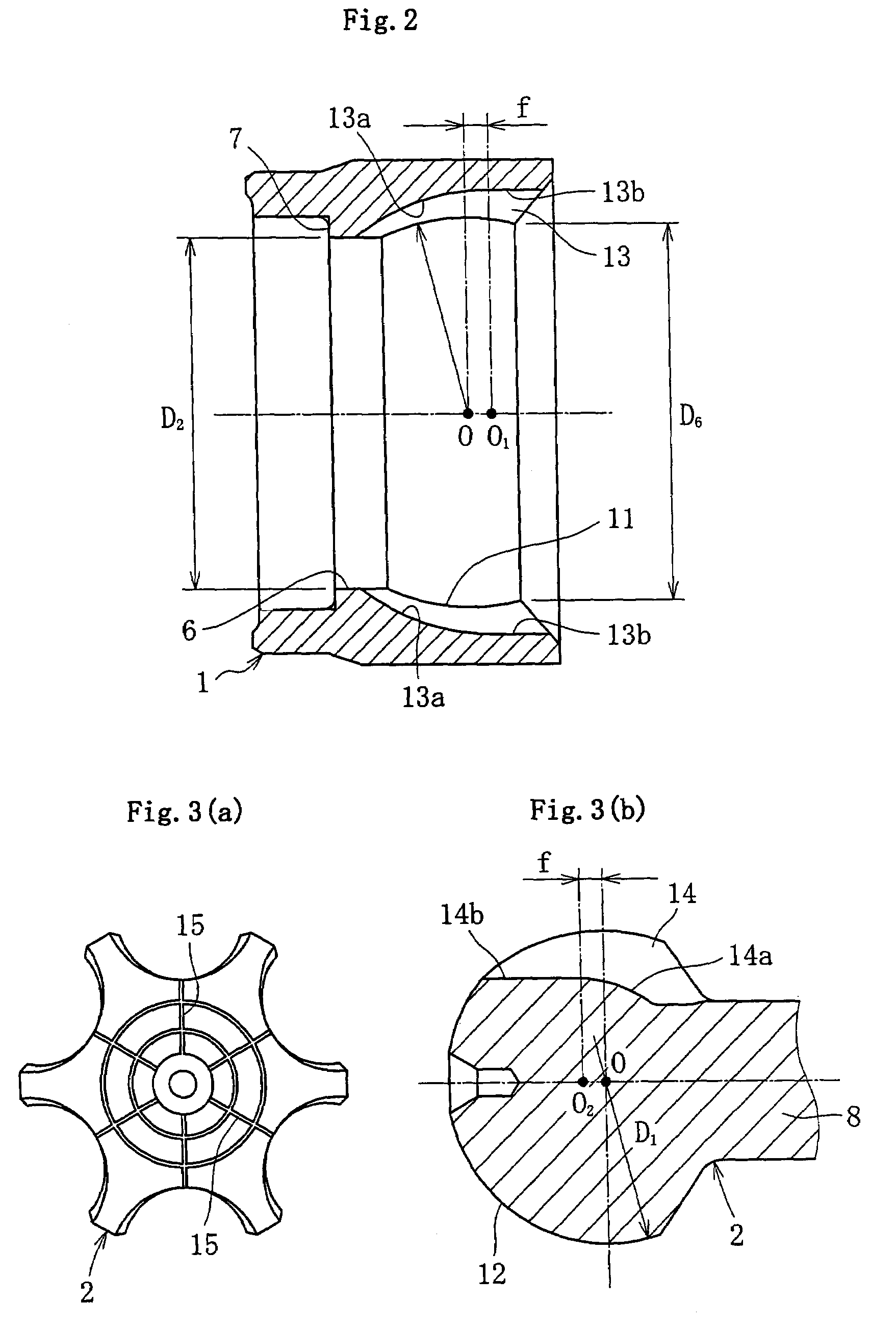Fixed type constant velocity joint and method of producing the same
a constant velocity joint, fixed technology, applied in the direction of yielding couplings, rotary machine parts, couplings, etc., can solve the problems of reducing the torque load capacity, the torque load capacity of the constant velocity joint becomes smaller, and the fear of increasing the heat generation rate, so as to achieve the effect of reducing the size of the constant velocity join
- Summary
- Abstract
- Description
- Claims
- Application Information
AI Technical Summary
Benefits of technology
Problems solved by technology
Method used
Image
Examples
Embodiment Construction
[0041]FIG. 1(a) and (b) show an embodiment of the invention, illustrating a fixed type constant velocity joint of the UJ type, (a) being a sectional view taken along the line B-O-B in (b), which is a sectional view taken along the line A-O-A in (a) The fixed type constant velocity joint in this embodiment comprises a joint outer ring 1, a joint inner ring 2, a cage 3, and torque transmitting balls 4 (hereinafter referred to simply as balls), and a stem shaft 5.
[0042]The joint outer ring 1, as shown in FIG. 2, is in the form of a sleeve that opens at one end for joining the stem shaft 5 and opens at the other end to receive the joint inner ring 2, cage 3 and balls 4. One end side (stem side) of the joint outer ring 1 is formed with an inner cylindrical surface 6 having a minimum inner diameter D2 larger than the outer diameter D1 of the joint inner ring 2 to allow passage of the joint inner ring 2 during assembling to be later described. The axial end of the inner cylindrical surface...
PUM
 Login to View More
Login to View More Abstract
Description
Claims
Application Information
 Login to View More
Login to View More - R&D
- Intellectual Property
- Life Sciences
- Materials
- Tech Scout
- Unparalleled Data Quality
- Higher Quality Content
- 60% Fewer Hallucinations
Browse by: Latest US Patents, China's latest patents, Technical Efficacy Thesaurus, Application Domain, Technology Topic, Popular Technical Reports.
© 2025 PatSnap. All rights reserved.Legal|Privacy policy|Modern Slavery Act Transparency Statement|Sitemap|About US| Contact US: help@patsnap.com



